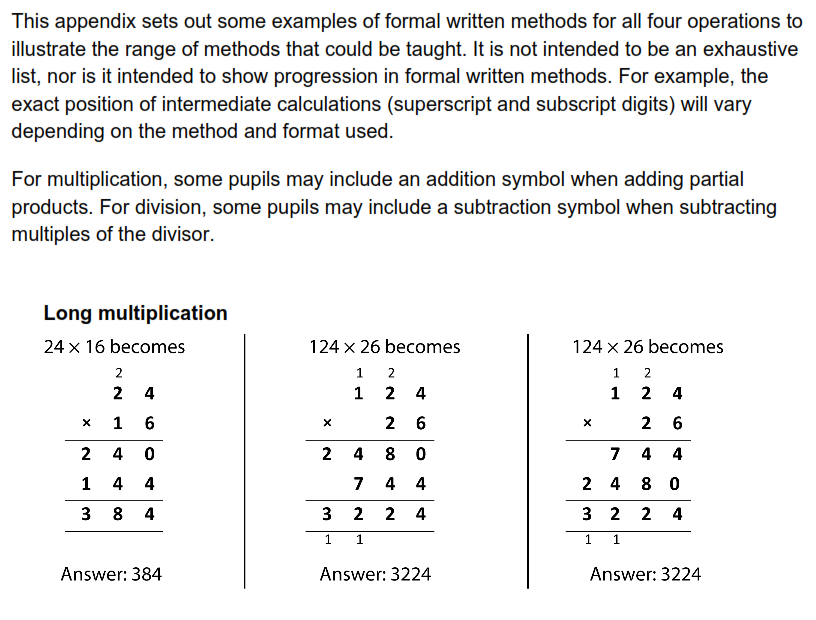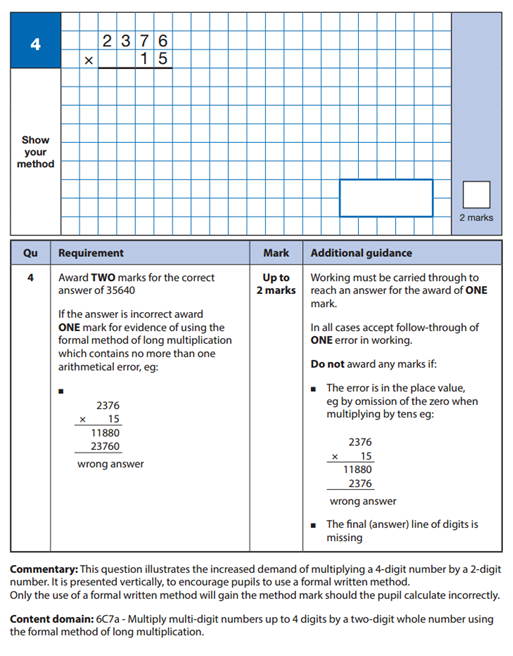Then I did this activity from the NCETM and several of my Year 7s decided they really liked Gelosia multiplication. Some of them had previously been really unsuccessful with grid method - although they understood what they were doing, they invariably lost the odd zero along the way, or made a pig's ear of lining up the addition calculation at the end. I told them to go with Gelosia if they understood it.
Then all the hoo-ha kicked off about the new Maths curriculum and teaching methods. On one course I attended, we had a fifteen-minute debate about the pros and cons of each method, with vast divisions of opinion. We spent an awfully long time debating the appendix of the new Primary Curriculum - that's this bit:
The Key Stage 2 SAMs seem to make things a little clearer - I found this:
"Key stage 2 tests will be designed to reward pupils whose working shows they have used the efficient methods. If children get the right answer, they get the marks. If they get the wrong answer but their working shows that they were using the most efficient methods, they will still be rewarded."
So my next question was - is it OK for pupils at GCSE to use any method, or do they have to do long multiplication too to get the method marks? So I went back to the SAMs for a peruse. Edexcel's Foundation Paper 1 has the calculation 24 x 225 (Q3a), with the following in the mark scheme:
M1 for a complete correct method for multiplication with no more than one multiplication error
Leaving out the accreditation mess and presuming the exams stay fairly similar, it seems that, although KS2 tests are asking for long multiplication, our GCSE pupils are fine to continue to use whichever method they prefer.


 RSS Feed
RSS Feed
